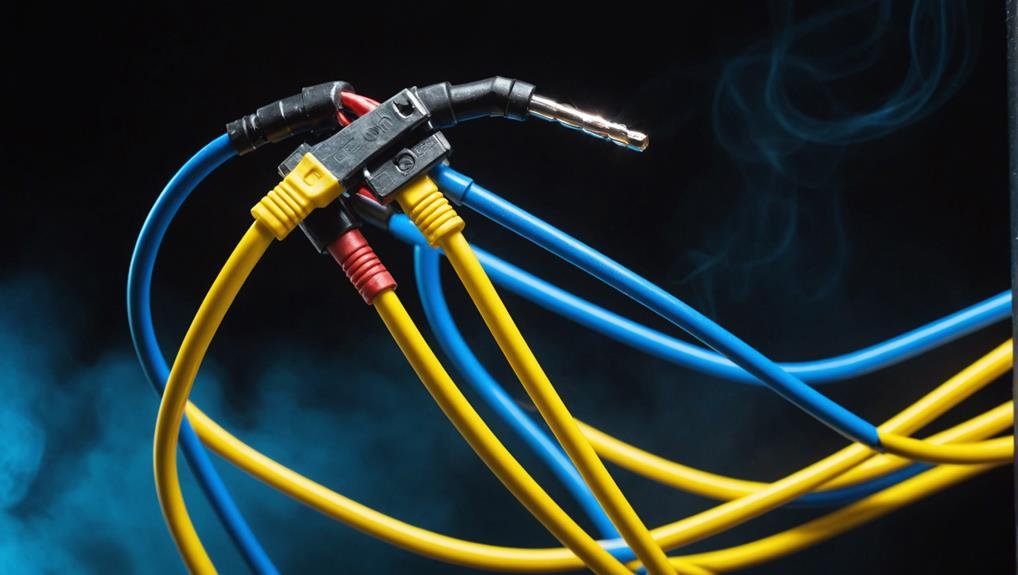When you connect your jumper cables, sparks flying everywhere signal a problem. Poor connections, corroded terminals, and reversed polarity are common causes of sparking. Loose strands or corroded terminals on your jumper cables can spark, and incorrect connections can lead to short circuits, damage, and even fire hazards. Make sure to inspect your cables and terminals regularly, cleaning them with a wire brush to reduce resistance and sparking. By understanding the underlying causes of sparking, you can take steps to prevent damage to your vehicle's electrical system and guarantee a safe jump-start process – and that's just the beginning of what you can uncover.
Key Takeaways
- Jumper cables with loose strands or corroded terminals can spark due to poor connections and resistance.
- Incorrect positive and negative terminal connections can cause sparking incidents and even damage to electronic components.
- Corroded terminals hinder clean connections, causing sparking, and should be cleaned regularly with a wire brush.
- Ignoring sparking incidents can result in fire hazards and vehicle damage, emphasizing the need for correct jump-starting procedures.
- Regularly inspecting and maintaining cables and terminals prevents corrosion and sparking, ensuring a safe and efficient jump-start process.
Poor Connections Cause Sparking
When you connect jumper cables to a battery, a single loose strand or corroded terminal can spark, putting you and your vehicle at risk of damage or even fire. This is because poor connections between the jumper cables and battery terminals can cause sparking during jump-starting.
You see, when there's resistance or a loose connection in the jumper cable connection, it can generate sparks. And, if you're not careful, incorrectly connecting the positive and negative terminals can lead to dangerous sparking incidents. To minimize the risk, it's crucial to make sure secure and proper connections.
High resistance at the connection points can also generate sparks when attempting to jump-start a vehicle. By being mindful of these potential hazards, you can reduce the likelihood of sparking when using jumper cables.
Corroded Terminals and Sparking
Corroded terminals on your car's battery can spark a fire when you're trying to jump-start the engine, making it important to address corrosion before connecting the jumper cables. When you have corroded terminals, the oxidation and buildup on the terminals hinder a clean connection, causing sparks during the jump-start process. This corrosion creates a poor electrical connection, resulting in arcing and sparking with jumper cables.
To minimize sparking, it's vital to clean your terminals regularly.
Here are a few tips to keep in mind:
- Cleaning your terminals with a wire brush can reduce resistance and minimize sparking during jump-starting.
- Make sure to remove any corrosion buildup before connecting the jumper cables.
- Regularly inspecting and maintaining your terminals can prevent corrosion from building up in the first place.
Reversed Polarity Sparks Danger
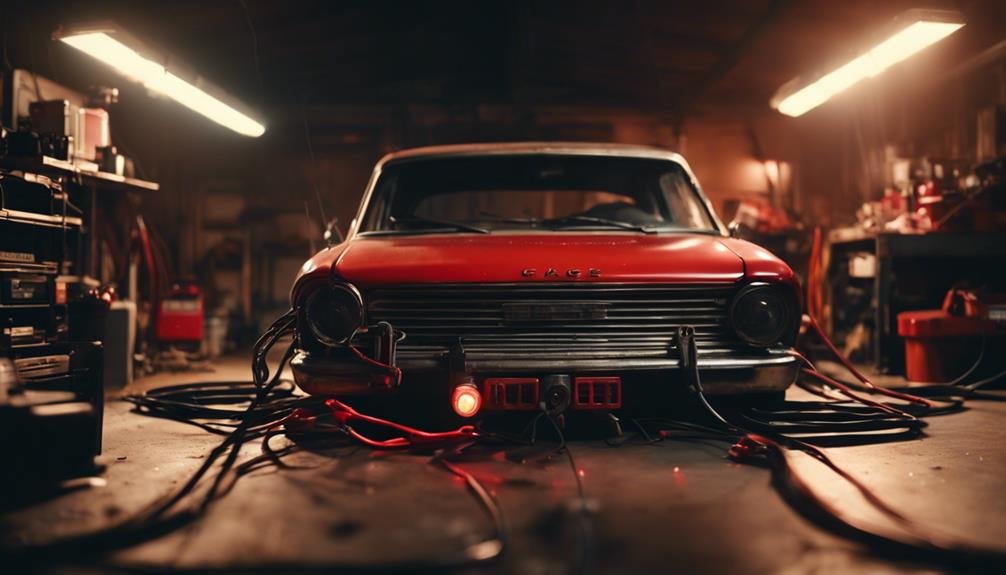
You're taking a significant risk of sparking danger when you incorrectly connect the positive and negative terminals while jump-starting, a mistake that can have severe consequences. Reversed polarity sparks can lead to short circuits, battery damage, and even damage to sensitive electronic components in your vehicle. The consequences of sparking due to reversed polarity can be costly and even dangerous.
| Mistake | Consequence | Prevention |
|---|---|---|
| Incorrectly connecting positive and negative terminals | Sparking, short circuits, battery damage | Make sure correct cable connections |
| Reversed polarity during jump-starting | Damage to electronic components | Double-check terminal connections |
| Ignoring sparking incidents | Fire hazards, vehicle damage | Address sparking issues promptly |
| Overlooking correct jump-starting procedures | Repeated sparking incidents | Follow proper jump-starting protocols |
| Failing to inspect cables and terminals | Corrosion, sparking, and damage | Regularly inspect and maintain cables and terminals |
To avoid sparking danger, it's important to make sure correct cable connections and follow proper jump-starting procedures. Remember, sparking incidents can lead to severe consequences, so it's vital to address them promptly and take preventive measures to avoid reversed polarity sparks.
Correct Jumper Cable Usage
To safely jump-start a vehicle, use heavy-duty, insulated jumper cables designed specifically for this purpose. Always connect the positive (+) and negative (-) terminals in the correct order to prevent sparking.
When jump-starting, it's important to follow the correct procedure to avoid accidents and damage to the vehicles involved.
Here are some vital tips to keep in mind:
- Guarantee secure connections by attaching the cables firmly to the battery terminals, making sure they won't come loose during the jump-starting process.
- Position the jumper cables away from moving engine parts to avoid accidents and prevent damage to the cables.
- Stand clear of the engine compartments during the connection process to prevent injury from moving parts or electrical shock.
Vehicle Preparation Is Key
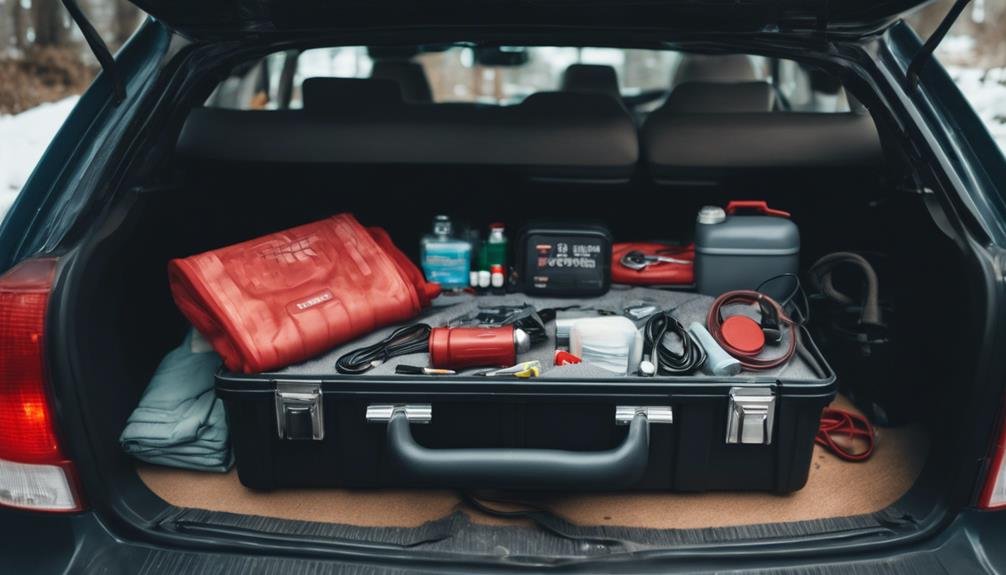
Before attempting to jump-start a vehicle, make sure both cars are turned off and inspect the battery terminals for any signs of corrosion or damage. You don't want to risk any electrical shocks or short circuits. It's vital to verify that the jumper cables are heavy-duty and insulated to handle the electrical load. Keep the cables away from moving engine parts to reduce the risk of accidents during connection.
| Vehicle Preparation Step | Why It's Essential | What to Check |
|---|---|---|
| Turn off both cars | Prevents electrical shocks | Ensure all electrical accessories are off |
| Inspect battery terminals | Prevents corrosion damage | Look for signs of corrosion or damage |
| Verify jumper cable quality | Ensures safe electrical flow | Check for heavy-duty insulation and construction |
| Keep cables away from moving parts | Reduces risk of accidents | Keep cables clear of engine components |
Proper vehicle preparation is key to a successful jump-start. By following these steps, you'll ensure a safe and efficient jump-start process. Remember, it's all about being cautious and methodical when working with electrical systems.
Clamps Not Tight Enough
Sparking during a jump-start can be a sign that your clamps aren't fastened securely enough. This is a common issue that can lead to sparks flying everywhere, and it's a problem you want to avoid.
When your clamps aren't tight, it creates a high-resistance connection, which can cause arcing and potentially damage your vehicles.
To avoid this, make sure you:
- Fasten your clamps securely to guarantee a snug fit between the jumper cable clamps and the battery terminals
- Check that the clamps are clean and free of corrosion, which can also contribute to sparking
- Use the correct type of jumper cables and clamps for your vehicle, as specified in your owner's manual
Battery Terminal Cleaning Tips
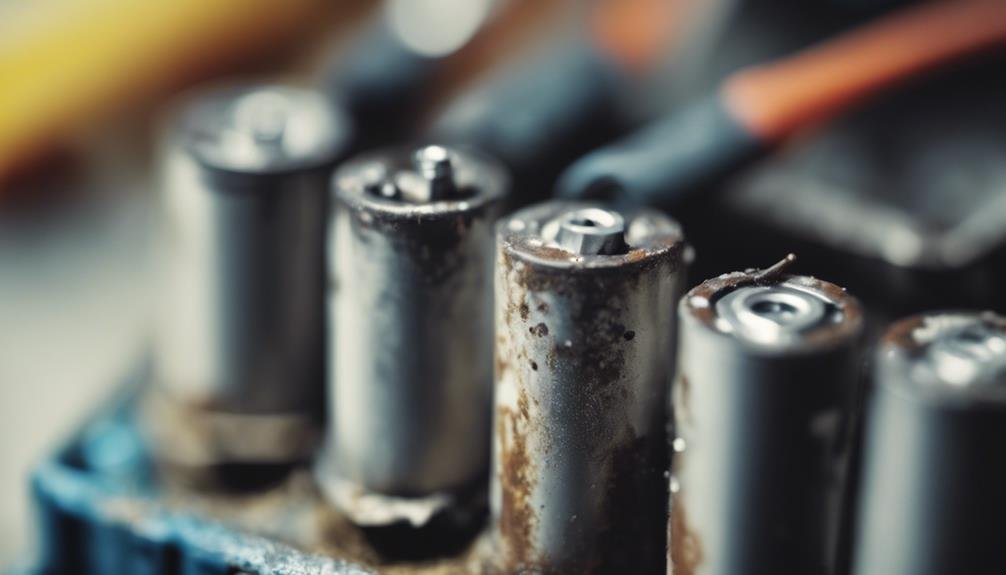
After making sure your clamps are securely fastened, you'll want to turn your attention to the battery terminals themselves, as a dirty or corroded terminal can also disrupt the flow of electricity and cause sparks to fly.
A dirty terminal can hinder the flow of electricity, leading to poor connections and, you guessed it, sparks. To prevent this, it's important to clean your battery terminals regularly. Mix baking soda and water to create a solution that'll help break down corrosion. Use a wire brush or terminal cleaner tool to remove stubborn corrosion, and you'll be left with a clean, spark-free connection.
Properly cleaned terminals ensure a strong connection for jump-starting, and it's worth the effort to prevent those pesky sparks. Take the time to clean your terminals, and you'll be rewarded with a reliable jump-start.
Sparking From Incorrect Hookup
When you correctly hook up jumper cables, you reduce the risk of sparking, which can lead to a potentially hazardous situation. This is particularly important when attempting to jump-start a dead battery in your car.
The flow of electricity can cause sparks, which pose a significant risk of fire and injury.
To minimize sparking, it's crucial to follow proper connection procedures. Here are some key considerations:
- Make sure the vehicles are parked on level ground, with engines turned off and in neutral or park gear.
- Set the parking brake on both cars and put the transmissions in neutral or park.
- Turn off all electrical accessories, including headlights, radios, and phones.
Avoiding Electrical System Damage
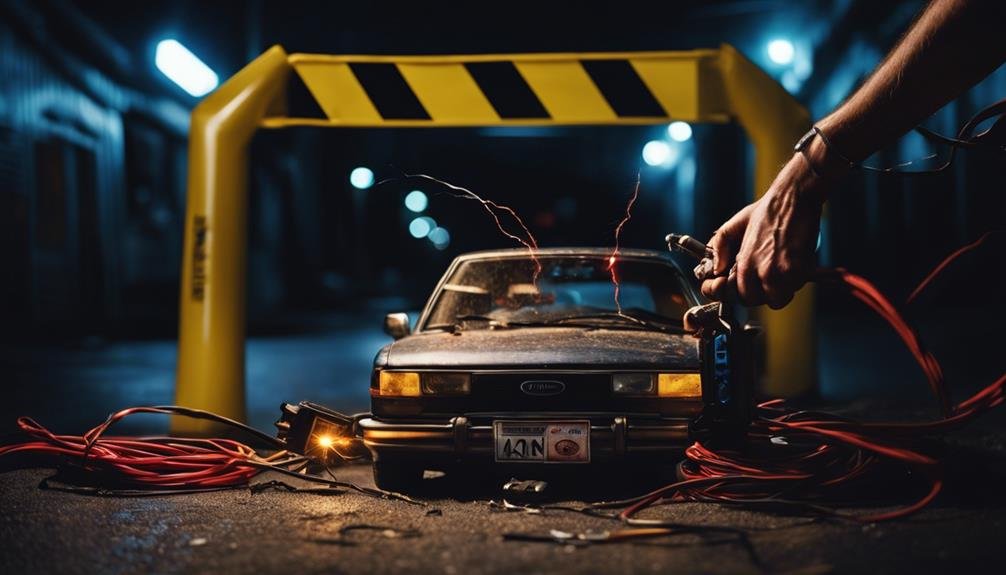
By following proper jump-starting procedures, you can prevent electrical system damage and guarantee a safe and successful jump-start.
When using jumper cables, it's important to connect them in the correct order to avoid sparking and electrical system damage. Before jump-starting, inspect your jumper cables for any signs of damage or wear, as damaged cables can cause sparking issues. Moreover, make sure to use heavy-duty, insulated jumper cables specifically designed for jump-starting, as they minimize the risk of sparking.
Following the manufacturer's guidelines for jump-starting procedures is also vital to prevent damage. When disconnecting the jumper cables, do so in the reverse order of connection to prevent electrical system damage.
Safe Jump-Starting Practices
To guarantee a safe and successful jump-start, you should always follow proper practices to minimize the risk of sparking and electrical system damage. When dealing with a dead car, it's crucial to take the necessary precautions to avoid any potential harm or damage.
To make sure a safe jump-start, remember to:
- Use heavy-duty, insulated jumper cables to prevent sparking and ensure safety during jump-starting
- Turn off both vehicles before connecting jumper cables to avoid sparking incidents
- Keep jumper cables away from moving engine parts to prevent accidents or injury from sparking
Frequently Asked Questions
Are Jumper Cables Supposed to Spark?
You're wondering if jumper cables are supposed to spark, right? Well, some sparking is normal during jump-starting, but excessive sparking can be a sign of a problem, so it is crucial to connect cables correctly to minimize sparks.
Why Are My Jump Leads Sparking and Smoking?
When you connect your jump leads, sparks and smoke appear – it's a warning sign. You're likely causing a short circuit or using damaged cables, so disconnect immediately to prevent electrical damage or injury.
Why Did My Jumper Cables Catch on Fire?
You're wondering why your jumper cables caught on fire, and it's likely due to improper connections, damaged cables, or poor insulation, which can cause a short circuit, sparking, and eventually, a fire.
Why Is My Negative Battery Cable Sparking?
When you connect the negative cable, you notice sparking, which might be due to a high-resistance connection at the ground bolt or surface rust, causing excessive sparking, especially with a dead battery drawing heavy current.
Conclusion
Now that you've identified the reasons behind sparking jumper cables, make sure you're taking the necessary precautions to avoid electrical system damage.
Remember, correct jumper cable usage, clean battery terminals, and proper vehicle preparation are key to a safe and successful jump-start.
By following these guidelines, you'll be well-equipped to handle emergency situations and get back on the road quickly, without risking your safety or the integrity of your vehicle's electrical system.
